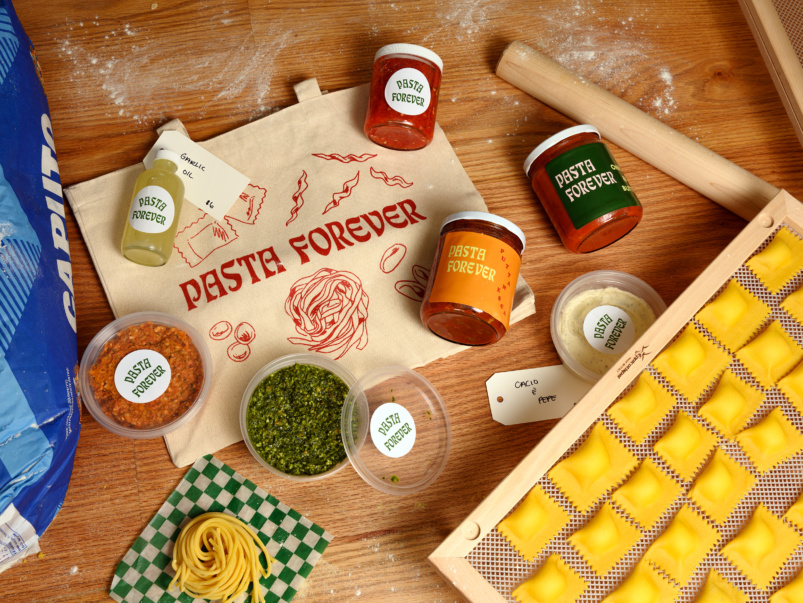Inside Oroshi Fish Co., a sleek new fish counter and sushi shop tucked down a west-end laneway

Oroshi Fish Co. comes to us from Jason Ching and Edward Bang, the duo behind Baldwin Village temaki bar Omai, and Jeff Kang of Queen West wine and sushi spot Ikune. The space was conceived primarily as a fish commissary—buying ultra-high quality fish in large quantities and using some of it to supply other restaurants—with a sushi bar as a little add-on. But then, the takeout business took off, thanks to the freshness of the wares and the culinary team’s focus on dry-aging. (Though not all the sushi undergoes this process—it’s generally reserved for meatier fish, like steelhead and sea bass).

When you enter through the blue door in the laneway just north of College, the first thing you’ll see is a dozen or so whole fish, neatly arranged by size, dangling upside down in a large, glass-walled refrigerator above trays of salt. They’re not just on display for the (admittedly impressive) aesthetic: what you’re seeing is a closely monitored dry-aging process—yes, just like steak. Dry-aging fish removes some of its moisture, which firms its texture and concentrates its flavour by increasing the ratio of fat to water. The result is among the butteriest, freshest-tasting, most flavourful sushi this side of the Pacific.
Most of the one-room restaurant is taken up by an open kitchen that runs so smoothly, watching it in operation is nearly its own form of meditation. The dry-aging fridge is the space’s visual centrepiece; next to it, you’ll find refrigerated pantry items, fish portioned for taking home, dry goods and some slick Oroshi Fish Co. merch. A sushi pantry—which includes house blends of sushi vinegar, seasoned soy, and furikake—complements a tight, traditional menu of rolls, sashimi, donburi, and nigiri. You can also buy the fish on its own, wholesale or in convenient portions for at-home sushi making.
Here’s a look around the shop and what’s on the menu.
A whole steelhead salmon, partway through its dry-aging process:

Why dry-age fish? Just as with steak, aging in a carefully calibrated environment pulls out some of the moisture, concentrating flavour and firming texture. And no, it doesn’t make it taste more fishy, at least not in the unappetizing sense—its umami notes get a serious boost, but if anything, it tastes significantly cleaner and fresher than the average variety:

One hallmark of dry-aged fish is its firm, creamy texture. With tendons broken down and an increased ratio of fat to water, the process arguably elevates the product to the pinnacle of its potential:

Here’s a closer look:

On the left, we have the omakase for two, and on the right, the uni don. The former is intentionally arranged in optimal eating order—bottom up and right to left, the items escalate from lean to fatty. According to chef Bang, starting with lean fish and working your way up primes your palate for the best possible taste experience. In order: tamago (egg omelette, made with shiitake dashi); bay scallop with lime crème fraîche; uni (eel); ebi (tiger prawn); hotate (scallop); suzuki (striped bass) with lemon zest; sake (steelhead salmon) with lime crème fraîche and cured salmon roe; hamachi (yellowtail) with pickled shishito peppers; cured saba (mackerel) with grated ginger and scallion; and finally, in the top row, three varieties of bluefin tuna—akami (lean), chutoro (medium-fatty), and otoro (fatty). $48 for Omakase, $45 for uni don:

This collection of house-made pantry items includes a lovely soy sauce seasoned with sake, bonito, kombu, and mirin. Besides being solid kitchen staples for a wide range of applications, these are good items to have on hand if you want to make sushi at home, especially with Oroshi’s dry-aged fish:

Here’s the omakase set again, pictured with its accompanying hand rolls (chef’s choice: in this case, tuna and steelhead) on the left. On the right, the sashimi set ($28):

The eight-piece assorted sashimi set. Right to left: striped sea bass; chutoro (medium-fatty) tuna; steelhead salmon; and yellowtail. The intricately cut steelhead is a revelation—its exquisitely rich texture is reminiscent of pork belly ($28):

Tidy pieces of tuna and steelhead nigiri:

Rich, velvety yellowtail nigiri:

The uni don is adapted from a similar dish at Omai. Sea urchin, scallop, salmon roe, and tamago (egg omelette) top a bed of seasoned sushi rice and toasted nori. If you’re squeamish about sea urchin, this is the way to try it: creamy, deeply savoury, and bracingly fresh ($45):

962 College St. (head down Bill Cameron Lane and look for the blue door), oroshifishco.com, @oroshi_fishco








